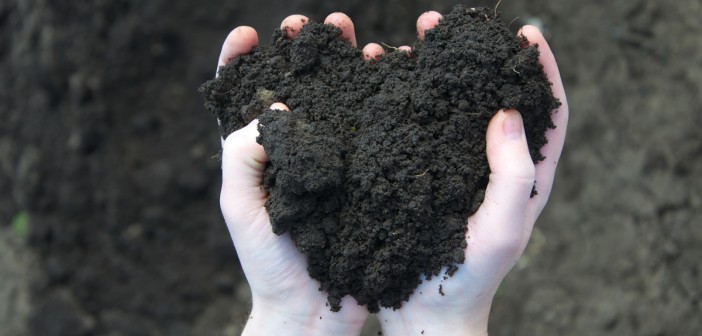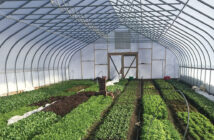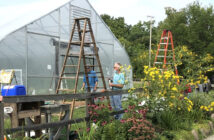Having a productive and healthy garden starts with good quality soil to anchor the roots and bring in the nutrients necessary for proper plant growth. First determine the type of soil that you have. The soil may have a lot of clay which impedes drainage and restricts oxygen flow. It might be a little too sandy and not able to retain a lot of nutrients. Limestone feels dry and crumbly; silt feels smooth; and peat feels spongy and has a high amount of decomposed organic matter.
Depending on the soil type, it could benefit from a dose of quality organic matter mixed into it or some fertilizer. You might wish to start with a soil test to determine its acidity and alkalinity and to see what kinds of nutrients need to be added. When adding fertilizer, only add the amount that is actually needed for your soil. MSU Extension experts warn that too much phosphorous and nitrogen from fertilizers can contaminate surface and groundwater. Also, there are many organic fertilizers available, such as fish meal, bone meal, rock potash, wood ash and seaweed meal.
Mixing compost into soil can improve its organic content. There are several effective types of compost out there. Yard waste, such as grass clippings and leaves, is high in nitrogen and is usually readily available or can be obtained at municipal mulch piles. Gardeners agree that animal manures are highly effective sources of compost.
Starting a compost pile is recommended for its convenience, and there are many ways to do it. You can set aside a pile in the corner of your garden or make a more defined compost structure. Using construction scrap wood, you can build a simple, square compost bin allowing space between the boards for air flow. Wooden compost bins with slatted sides and plastic barrels with holes drilled around the barrel are other possibilities.
Materials to add to a compost pile include vegetable and fruit peels, nut shells, coffee grounds, manure, dried leaves, grass clippings and weeds pulled before they seed. Avoid meat scraps, cooked food and prunings from woody plants. Make sure the compost is mixed and turned with a shovel periodically as the air helps break down the materials faster. According to The Organic Gardening Book by Geoff Hamilton, it is ideal to have two compost piles going at the same time. This way one can be left to rot down properly while the other is being filled up.
Keep your garden soil healthy with compost that suits the soil type you’re working with and your plants and flowers will reap the benefits all season.








